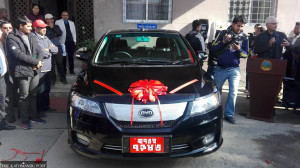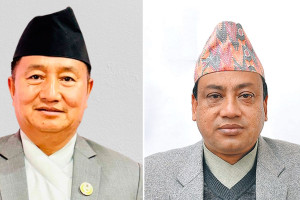Miscellaneous
A Contemporary History of Great Men?
In Battles of the New Republic, Prashant Jha seems to shut out certain voices, especially those of women
Surabhi Pudasaini & Astha Sharma Pokharel
These reviews, however, have not touched upon what we consider an unexpected gap. Aside from the brilliant third chapter on the Madhes, chunks of the book read like a history of kings, or, more accurately, of politically elite Bahun/Chhetri men. In the prologue Jha writes: “This is a story... of inclusive nationalism where marginalised social groups struggle for dignity and power and challenge long-held notions of what constitutes being a citizen”. We have struggled to find enough of this in the book. Jha seems to shut out certain voices even when they are aching to tell their stories, especially the voices of women.
Let us begin with the first chapter: Jha is travelling in Gorkha with Baburam Bhattarai and Hisila Yami. Jha writes extensively on Bhattarai–his personal history, his political awakening, even his eating habits. But what of Yami’s role in the revolution and her political journey? This is what Jha has to say: “It was under Baburam’s spell that Hisila had turned to Marxism”. Is this Jha’s observation, Yami’s own, or simply an image that appealed to Jha of Yami in stereotypically feminine thrall of her husband? A few lines later, Jha continues: “As Baburam struggled to manage both a PhD programme and his political activism, Hisila became his pillar of support”.
To demonstrate the problems in these lines, let us engage in an exercise of role reversal. Certain activists who have worked closely with Bhattarai maintain that he is among the more sensitive of our senior leaders when it comes to gender. It is reasonable to assume that Yami, who was active with the Manushi Forum for Women’s Rights and Democratic Reforms during her student days in Delhi, has influenced Bhattarai’s thinking on gender. Would it be accurate to say, ‘It was under Hisila’s spell that Baburam had turned to feminism’? It would not (not least because we’re not convinced Bhattarai is in fact a feminist). In the same vein, we happily accept that Yami’s evident commitment to radical politics was first sparked by Bhattarai. But let us respect and acknowledge her own engagement with Marxist politics rather than thoughtlessly cast her in the role of supportive wife. Did Yami really say nothing worth recounting in the book to Jha?
Had we been in Jha’s shoes, there would have been much that we would have liked to ask Yami and Bhattarai. We must give the Maoist party credit for decisively changing the playing field for women, as it did for other marginalised groups. Yet, we would question why a sound theoretical understanding of gender does not exist in the Maoist party. Why do the Maoists argue that the dismantling of the feudal system alone will lead to the emancipation of Nepali women when they do not make the same claim for Nepal’s ethnic and caste groups? It was the evolution of Maoist theory, of accommodating the ‘objective conditions’ of caste and ethnicity in Nepal, that was essential to the party’s political success.
We would have liked to ask Yami and Bhattarai why the party does not figure the systemic and historical ills of patriarchy as a central problem in its own right, alongside the pillars of class and ethnicity/caste. One consequence of this conceptual weakness was played out during the integration/rehabilitation process of former PLA fighters. If the integration process demonstrated the party’s abysmal attitude towards its cadres, the party doubly failed its female cadres. By creating no other options for them, the party essentially pushed them into the traditionally sanctioned roles of mother, wife, and homemaker, and into communities that rejected them. Jha too, is unable to see that female and male ex-combatants faced different realities within the cantonments, the party, and after re-integration.
Our second example of the erasing of women is in the otherwise powerful chapter on the Madhes. On page 173, Jha describes the Panchayat regime’s erasure of the Tarai’s history, politics, and identity: “There was little a Madhesi could relate to when he was taught in classrooms…” and later “But that was the aim, to make him more Nepali through pedagogy and force him to be ashamed of his own roots.” The Panchayat state thought of the true Nepali subject in these terms–as Nepali speaking, of hill origin, and decidedly male. While rightly criticising the first two markers of citizenship, Jha does nothing to challenge the third.
This would be the ideal place to bring in the still continuing legal discrimination of all Nepali women with regards to citizenship. As current citizenship law stands, foreign spouses of Nepali men gain citizenship immediately after marriage. However, there is no such provision on citizenship for foreign men married to Nepali women. A Nepali woman is also not allowed to pass on hereditary citizenship to her children without proof that the father is Nepali.
Women’s citizenship rights became a contested topic within the CA in 2010. Most CA members refused to give women full citizenship rights. The fear was that cross-border marriages–common across the Madhes–would result in Indian men threatening Nepali sovereignty. The only way the CA would agree to equality would be a law forcing foreign spouses of both men AND women to wait several years after marriage for citizenship.
While Pahadi women in the CA were open to such a law, Madhesi women rightly fought against it. This chauvinistic law would have been a huge step backward for women across the border who marry into Nepali households in the Madhes. It would have made many women in the Madhes stateless, for surely their fathers and brothers across the border would say they belonged to their husbands’ homes and countries. This discrimination against women comes down to patriarchal and Pahadi notions of citizenship and nationality. The agreement regarding citizenship made on November 2010 was also the death of a dream harboured by Nepali women. This battle, so fundamental to the spirit of the Madhes Movement and the dream of an inclusive Nepal, does not find space in Jha’s book.
Why do these gaps exist? The answers point back to the issue of identity. As a man, Jha was unlikely to have had easy access into women’s lives, views, and political struggles. But we cannot believe that he had no access to women involved in the Madhes Movement, active in the Maoist party, or involved in CA debates on citizenship.
The problem is that Jha–because of his gender–appears less attuned to seeing women’s struggles. The rules of our private and public spaces as well as our understanding of legitimate forms of struggle have been defined by upper-caste Hindu men. The practices and strategies of the marginalised are given marginal value. This strikes at the heart of identity politics. How can any group achieve ‘equality’ when its experiences and struggles are not acknowledged?
As feminists, we found so much missing in Battles. But we do not merely seek to point fingers. We all have prejudices and blind spots. Jha finds himself unable to see women’s political practices with the empathy he brings to other struggles. But good intentions alone are never enough. It matters immensely when a much-praised book written by a journalist of Jha’s profile so wholly misses the struggles of women. We have written this review in the hope of starting a public conversation about the mainstream’s erasure of the political practices of marginalised groups, including women. It is also our hope that Jha will engage with this critique, leading to amendments and additions in future editions of Battles.
Pudasaini and Sharma Pokharel are members of Chaukath, a network of feminists in Nepal who work to create a space where politics, society and culture can be examined through feminist lenses




 21.53°C Kathmandu
21.53°C Kathmandu












